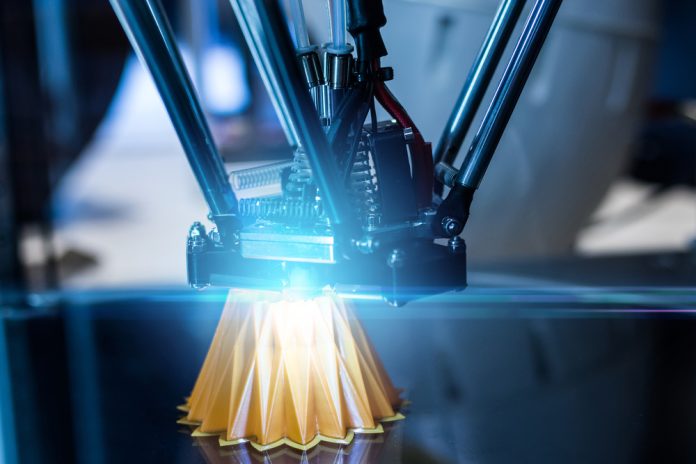Ellie Gabel, Associate Editor at Revolutionized, explores how micromanufacturing, automation, and 3D printing advance precision production for tiny, high-accuracy components.
Micromanufacturing is an increasingly popular fabrication technique that produces tiny items — often on the millimeter scale — to meet precise tolerances.
Numerous advanced manufacturing techniques have made this option more accessible and accurate, improving medical devices, electronics, and more.
Automating the quality control of tiny parts
Inspections are crucial in micromanufacturing, ensuring the products meet clients’ specifications.
Although human involvement remains necessary, many manufacturers have explored viable ways to reduce manual processes that could become too time-consuming or error-prone. That was the case with KIF Parechoc, a Swiss producer of watch parts and subassemblies.
Leaders wanted a one-click system to detect numerous parts and import their measurements into an internal database.
However, due to the challenging production environment and the intricacies of measuring numerous tiny parts at high speeds, they realised any adopted technology would need machine-vision capabilities.
The company’s smallest parts are only 20 microns thick and under a few millimeters in diameter.
KIF Parechoc previously performed inspections and measurements in a separate clean room facility, but decision-makers intended to move these tasks to the production floor.
The chosen automated solution enabled that change, letting the company rely on a single machine to automatically clean, dry, and measure the precision parts.
Since the machine has highly advanced optical equipment and can automatically place the parts for inspection, operators do not have to make manual adjustments.
Additionally, since it takes 360-degree measurements, perspective distortion — which can cause inaccuracies that people must correct later — is not a possibility.
This example explains why many industries have boosted production outputs by more than 5% after initially implementing automation.
Thoughtful decisions about how, when, and why to use automation can keep quality levels high while raising productivity.
Working with tiny parts can be cumbersome for people, but these tasks are ideal for specialised machines that perform reliably in busy environments.
Automation can also increase manufacturers’ versatility, allowing companies to offer a wider range of small components to clients with specific needs.
Achieving submicrometer precision with 3D printers
3D printers have been instrumental in shortening production times and increasing flexibility, especially when manufacturers need hard-to-find parts.
Some companies have even set up 3D printers in their production facilities to produce spare components when required.
Sometimes, people believe tiny parts will work well in theory but want more proof before launching larger manufacturing runs.
3D printers can give that assurance if manufacturers use them to make prototypes of microscale parts. Although product-specific variations exist, 3D-printed options cost an average of $100, making them ideal for individuals wanting several prototyped designs.
Some 3D-printing companies specialise in tiny, ultraprecise parts, tapping into a new but growing market segment.
One example is Scrona AG, which uses additive manufacturing for semiconductors, displays, and other in-demand components. The company’s innovative approach uses electrostatic forces to pull ink from a nozzle and guide it down to the printer bed.
This electrostatic ejection method is ink-agnostic, allowing manufacturers to use various viscosities, ranging from salt solutions to waxes. Additionally, it is a high-speed method for producers who want to maintain a high output while exploring this technique.
Users can create multidimensional items with lateral dimensions of less than 1 µm and control the thickness on the nanometer scale.
Creating tiny devices to improve medical outcomes
People making products to go inside the body must be particularly precise with their assessments, especially since unintended shortcomings could be life-altering.
However, micromanufacturing progress has come a long way, and some medical professionals believe minuscule devices could help patients live longer, healthier lives.
Those that go inside the body could deliver specific medications to the exact places needing them, potentially reducing many of the severe side effects of interventions such as chemotherapy.
Similarly, these tiny creations could help scientists learn more about new drugs’ impacts on the body, showing whether these treatments are safe for widespread use.
In one case, researchers developed microrobots with structures approximately 30 microns in diameter that delivered drugs to rats with bladder tumours.
This experiment gave the rodents four treatments across 21 days. The results showed that providing medication with tiny robots was more effective at reducing the size of the growths than conventional methods.
Based on that success, the team believes their work could improve how people receive medications and even get robot-based surgeries.
Although they will not test their innovation on humans for a while, this early work is important for showing which decisions are most likely to pay off in the real world.
Facilitating precision in tiny products
People working in earlier generations of the manufacturing industry sometimes found that products became less precise as their sizes decreased.
However, these fascinating examples show that advanced technologies, such as 3D printers and automation, allow people to make tiny items without sacrificing accuracy.
These ongoing micromanufacturing achievements will encourage researchers, manufacturing executives, and others to break boundaries and pursue new options to increase corporate competitiveness while improving people’s lives.
Additionally, their processes will inform peers and other interested parties what works best, creating a foundation for further investigations.









